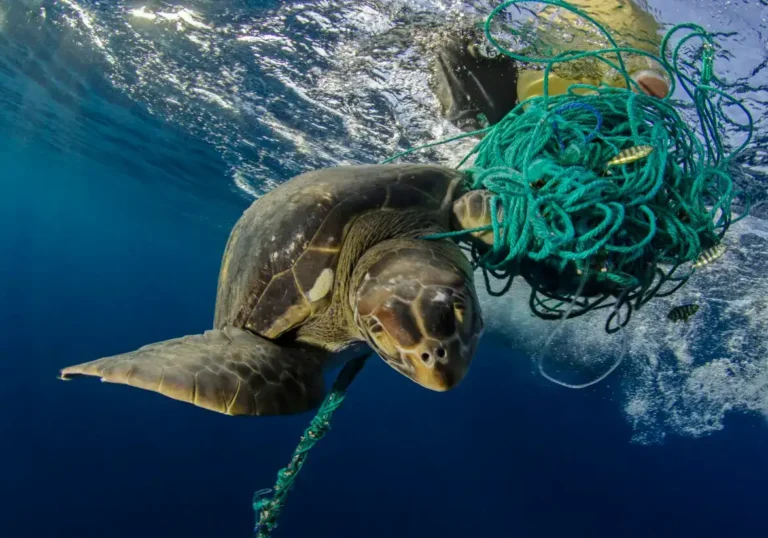Conservation Efforts in Galapagos Islands
When visiting the Galapagos, it’s our duty to take care of this beautiful archipelago. Travelers have a direct impact on Galapagos conservation. If every visitor does their part in protecting the biodiversity, it will greatly benefit the Galapagos Islands.
Overview of Galapagos Islands
The Galapagos Islands are a group of islands in the Pacific Ocean, about 600 miles from Ecuador. These Islands are famous for their special wildlife, which helped Charles Darwin develop his theory of evolution. The islands have many animals that you can’t find anywhere else, like giant tortoises, marine iguanas, and blue-footed boobies. The Galapagos Islands are protected, with a national park and a marine reserve to keep their natural beauty and wildlife safe.
Tourism has a big impact on the islands’ diversity. Visiting the Galapagos is a special experience where you can see animals up close in their natural home. However, it’s important for visitors to be responsible and be a part in conservation efforts of Galapagos Islands. By following rules and respecting the environment, we can help keep the Galapagos Islands safe for wildlife and for future generations to enjoy.
Importance of Conservation Efforts in these unique Islands
Conservation in the Galapagos Islands is crucial due to their unique wildlife and ecological significance. The islands are home to many species that can’t be found anywhere else, making them a living laboratory for scientific research and the study of evolution. Protecting these ecosystems ensures that scientists can continue to learn from their biodiversity. Additionally, the natural beauty of the Galapagos attracts tourists from around the world, supporting local communities and economies. As a World Heritage site, the Galapagos hold global importance, and preserving their pristine environments is essential for future generations to enjoy and benefit from. Conservation efforts help maintain the delicate balance of these unique islands, safeguarding their flora and fauna against threats like invasive species, climate change, and human impact.

What are Threats To Galapagos Islands Conservation
The Galapagos Islands face many serious threats that harm their unique plants, animals, and environments. Here are the main threats in detail:
Invasive Species: Non-native plants and animals, brought to the Galapagos by accident or on purpose, are a big threat to the islands’ native species. Invasive species like rats, goats, and some plants take resources away from native species, damage their habitats, and can even cause the native species to die out.
Climate Change: The Galapagos Islands are facing big changes because of the Earth getting hotter and weather patterns shifting. This climate change is causing sea levels to rise, water temperatures to change, and ocean currents to shift, which affects both the animals that live in the sea and on land. Coral reefs are turning white because of heat stress, El Niño events happen more often, and animals have to find new places to live because their habitats are changing. These changes put many species in danger of dying out.
Illegal Activities: Doing things like fishing where you’re not supposed to, hunting animals that are in danger of disappearing, and building on land without permission are big problems in the Galapagos Islands. These activities hurt the environment and make it harder to keep the islands safe for plants and animals. They also ignore the laws that are meant to protect the islands from harm.

Galapagos Conservation Efforts
The main goal of Galapagos Conservation Efforts is to protect the special animals and environments of the Galapagos Islands. These efforts aim to safeguard the islands from potential harm, such as invasive species or more things like that. Moreover, they work hard to make sure the animals have the right homes where they can live happily and grow well.
Many different groups work together to keep the Galapagos Islands safe and healthy for the people who live there and for those who will come in the future. These groups include local clubs, scientists, and people who live on the islands. They all team up to make sure the islands stay in good shape so that everyone can have fun there for many years to come.
Community Engagement and Education
These are two vital parts of protecting the Galapagos Islands. It’s about getting everyone involved, from people who live there to visitors who come to explore. When communities are engaged, it means they’re actively taking part in efforts to care for the islands. This can involve things like joining clean-up events, learning about conservation, and spreading awareness to others.
Education plays a big role too. By teaching people about the unique animals, plants, and ecosystems of the Galapagos, they can understand why it’s so important to protect them. Education can happen in schools, community centers, or even through fun activities like nature walks or workshops. When everyone in the community is engaged and educated, they become stewards of the islands. They take pride in their natural surroundings and work together to keep them safe. This can include things like reporting pollution, following guidelines for responsible tourism, and supporting conservation initiatives.
Overall, Community Engagement and Education build a strong foundation for conservation in the Galapagos Islands. It’s not just about protecting the environment; it’s about empowering people to be champions for nature.